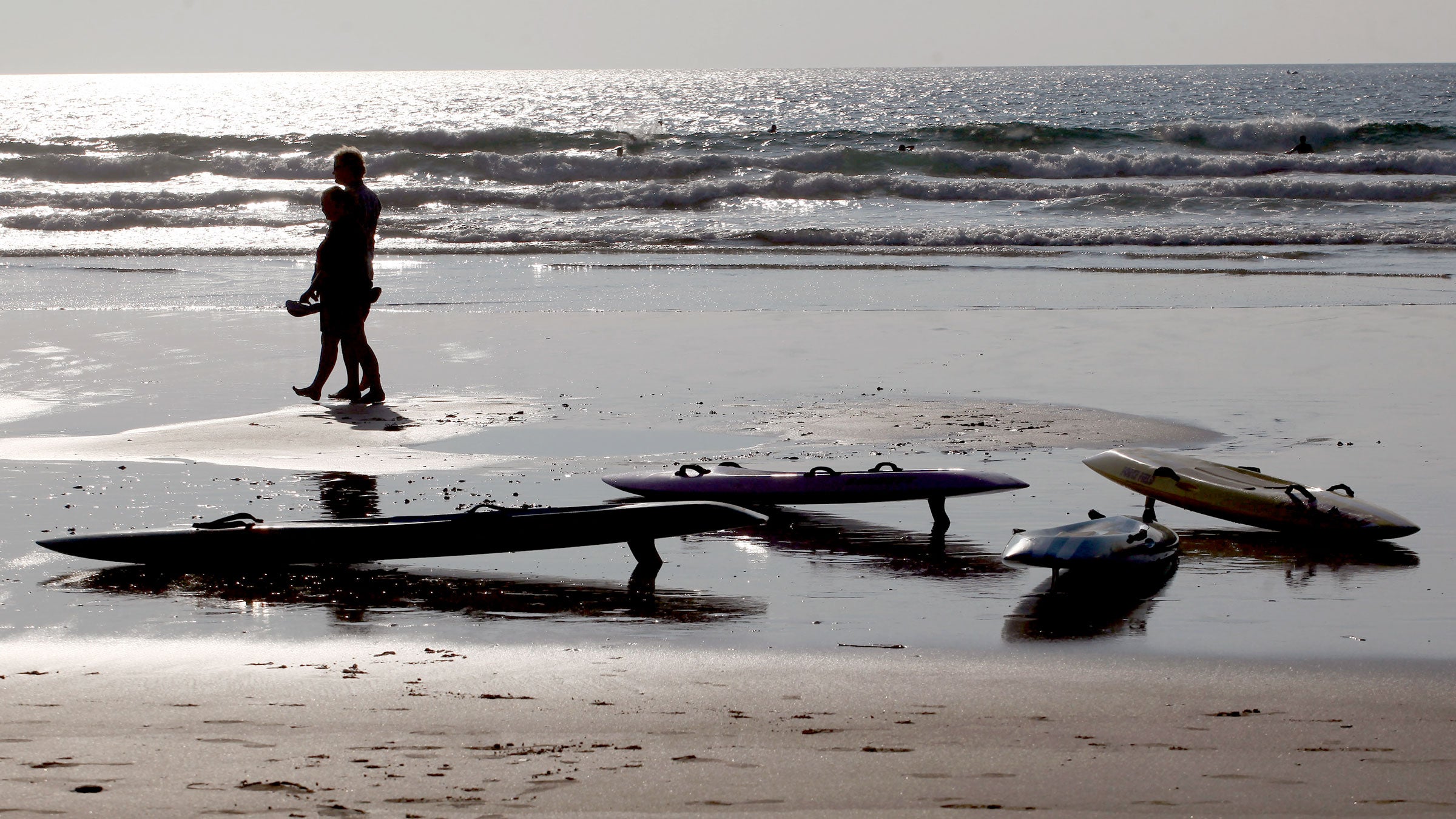Three surfers died Sunday after they were caught in a rip current off Mawgan Porth in southwest England.
that Britain’s Royal National Lifeboat Institution (RNLI), a 24-hour search-and-rescue service, launched an air-and-sea rescue at about 1:30 p.m., when onlookers noticed a group of seven surfers struggling. Four of the surfers were teenage boys, but they made it safely back to shore. The three adults—a man and a woman in their 40s and a man in his 50s—were rescued from the water while unconscious and airlifted to Royal Cornwall hospital but later pronounced dead.
Steve Instance, the RNLI lifeguard manager for the southwest, that one of the surfers who drowned may have gone in to help the others. “We believe that the group of children may have been the first to get into difficulty,” he .
A rip current is a strong, narrow flow of water that pulls directly away from shore. Swimmers who find themselves caught in one will often try to swim against it, tiring out and putting themselves at greater risk of drowning.
Peter Abell, who owns the Kingsurf school at Mawgan Porth, told the Guardian that even though the conditions weren’t terrible, some currents were slightly more dangerous than usual. “The waves were bigger, they were quite big. And it wasn’t the safest of days to be in the sea,” he said. “But it wasn’t particularly dangerous. There were lots of safe places to be, and they were just in the wrong place at the wrong time.”
Lifeguards usually monitor the water from April to September, and there were none at the beach on Sunday. There were, however, signs warning of the dangers of swimming without lifeguards present. that the RNLI will carry out a risk assessment in the wake of the drownings to determine whether lifeguard coverage should be extended later in the year.


